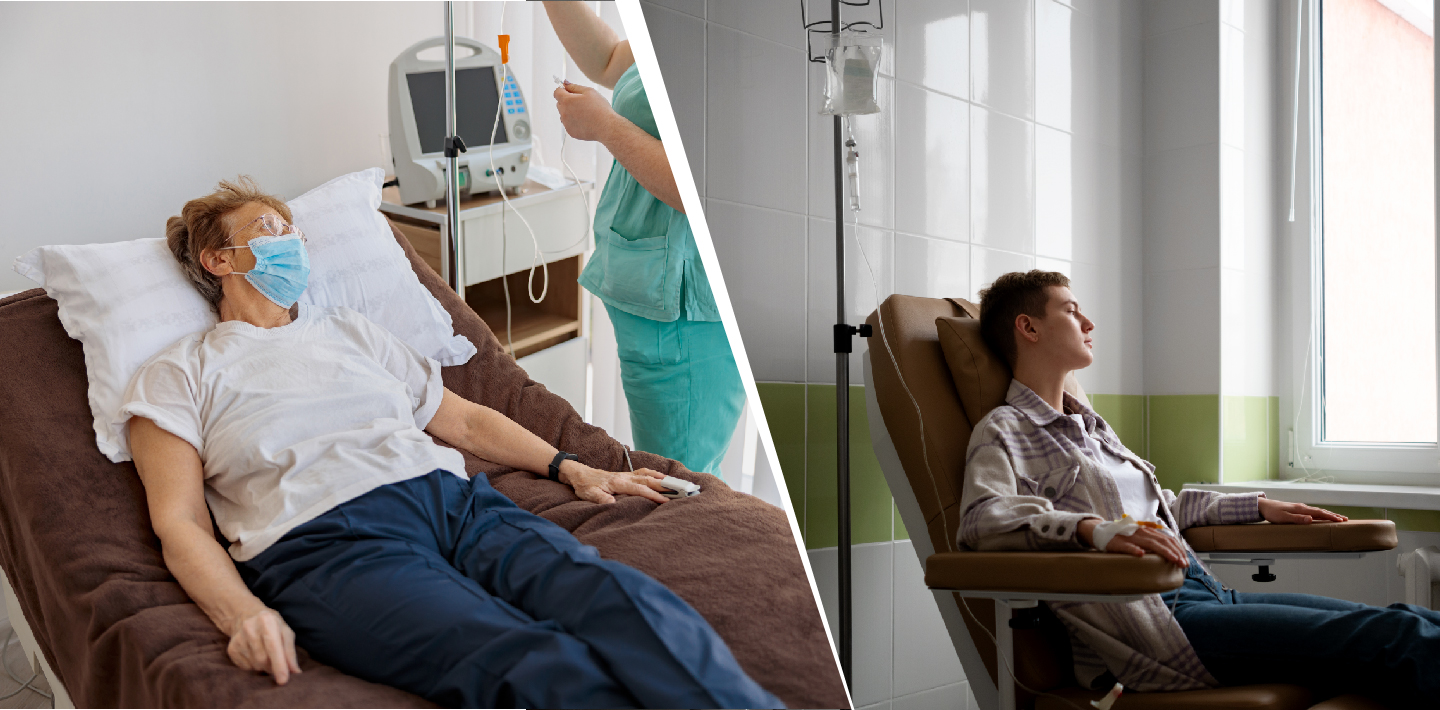Dialysis is a life-sustaining necessity for millions of people suffering from chronic kidney disease (CKD), a condition in which kidney function is compromised. This treatment helps the body remove waste, maintain electrolyte balance, and regulate fluid levels—functions usually performed by healthy kidneys. Two main types of dialysis dominate the landscape: peritoneal dialysis and hemodialysis.
Choosing between peritoneal and hemodialysis depends on the patient’s differences, needs, and medical care. Let’s examine what you need to know to understand both options.
Summary
- Peritoneal dialysis offers more flexibility and independence, allowing patients to manage treatment at home with fewer clinic visits.
- Hemodialysis is typically more suitable for patients who need regular medical supervision and have health concerns that make home dialysis difficult.
- Peritoneal dialysis and hemodialysis effectively replace kidney function, but they differ regarding daily life impact and treatment schedules.
- Choosing between the two depends on your health, lifestyle preferences, and medical considerations, with guidance from your healthcare team.
Peritoneal Dialysis: A Flexible, Home-Based Alternative
A home-based procedure called peritoneal dialysis filters fluid and waste from the blood using the lining of the abdomen. It provides sufficient care while promoting independence and flexibility.
How Peritoneal Dialysis Works
A peritoneal catheter is inserted into the abdomen to inject a sterile solution called dialysate into the abdominal cavity. The solution stays in the abdominal cavity for a fixed time, pulling waste and extra electrolytes through osmosis and diffusion.
After the dwell time, the solution used to contain waste is drained and replaced with fresh dialysate. Depending on the chosen dialysis method, this exchange process is repeated daily.
Types of Peritoneal Dialysis
- Continuous Ambulatory Peritoneal Dialysis (CAPD): Done without a machine. You complete four to five fluid exchanges daily, each taking 30 to 40 minutes. Because it requires only a peritoneal catheter and dialysate, you can perform CAPD at home, work, or even while traveling.
- Automated Peritoneal Dialysis (APD): Uses a cycler machine to perform exchanges at night while you sleep. Each cycle lasts 8 to 10 hours, which frees up your daytime hours for work, hobbies, or rest.
Advantages
Patients who choose this treatment highlight its many advantages, especially in terms of lifestyle:
- Greater Independence: Treatment can be performed at home, work, or while traveling.
- Fewer Dietary Restrictions: Because waste is removed more frequently, potassium, sodium, and fluid levels are more stable.
- Consistent Waste Removal: Daily exchanges maintain smoother toxin levels and avoid dramatic fluid shifts.
- Preservation of Residual Kidney Function: Studies suggest that this dialysis may help prolong the remaining kidney function.
Challenges and Considerations
Despite its benefits, peritoneal dialysis also presents unique challenges:
- Risk of Infection: The most serious complication is peritonitis, an infection of the peritoneal lining. Maintaining strict hygiene during exchanges is critical.
- Catheter Care: To prevent infection or blockage, patients must clean and protect the catheter site daily.
- Storage Space: Supplies must be stored in a clean, dry area, which can be challenging in small living spaces.
- Daily Time Commitment: While exchanges are shorter, they occur more frequently and require strict scheduling and planning.
Dialysis: Understanding the Basics
Dialysis is a procedure that takes over the function of failed kidneys by removing excess fluids, waste, and toxins from the blood. When the kidneys fail due to CKD or acute injury, dialysis becomes necessary to carry out vital functions and keep the body in balance.
Healthy kidneys filter approximately 50 gallons of blood daily and produce about 1 to 2 quarts of urine. When kidney function declines to 10–15% or less of its standard capacity, waste products such as urea and creatinine accumulate. If not treated, this can cause serious problems like fluid buildup, electrolyte issues, high blood pressure, and potentially death.
Hemodialysis: A Machine-Based, Clinically Supervised Treatment
Hemodialysis is one of the most common and widely used forms of dialysis. Blood is extracted from the patient’s body, filtered by a specialized device called a dialyzer (sometimes called an “artificial kidney”), and then put back into circulation. This method mimics the kidney’s natural filtration function and removes waste products, toxins, and excess fluid. Most patients undergo this treatment thrice per week, lasting between 3 and 5 hours.
How Hemodialysis Works
In this treatment, a vascular access point is essential. This access is created surgically and can be one of the following:
- Arteriovenous (AV) Fistula: A direct connection between a vein and an artery is regarded as the gold standard because of its low rate of complications and longevity.
- AV Graft: A synthetic tube connecting an artery to a vein, used when veins are unsuitable for a fistula.
- Central Venous Catheter: A temporary solution typically placed in the neck or chest for immediate access.
Once access is established, two needles are inserted to remove blood and return the filtered blood. The blood passes through the dialyzer, where waste, excess electrolytes, and fluid are removed, and the cleaned blood is returned to the patient.
Benefits
Hemodialysis offers several advantages, particularly for patients who:
- Professional Supervision: Training healthcare providers monitor each session, ensuring safety and immediate support.
- Effective Waste Removal: The treatment efficiently filters waste, toxins, and excess fluid from the blood, improving well-being.
- Fewer Daily Responsibilities: Performing 3 times a week reduces the need for daily exchanges or equipment management at home.
- Structured Routine: Regular, predictable schedules help patients maintain consistency in work and lifestyle.
- Access to Comprehensive Care: Dialysis centers offer advanced equipment and a team of specialists, including nephrologists and dietitians.
Challenges
While this treatment is effective, it also presents several challenges:
- Time Constraints: Travel to and from the dialysis center and the duration of each session can be demanding, especially for working individuals.
- Physical Side Effects: Some patients experience fatigue, muscle cramps, headaches, or fluctuations in blood pressure post-treatment.
- Dietary and Fluid Restrictions: Due to the treatment gap, patients must follow strict nutritional guidelines and limit fluid intake.
- Vascular Access Issues: Infections, clotting, or scarring can compromise the function of the access site over time.
Peritoneal Dialysis vs. Hemodialysis: Which Is Right for You?
Understanding your dialysis options can help you feel more prepared and confident about your treatment plan.
Dialysis and Daily Life: The Impact on Routine, Work, and Travel
Choosing between these dialysis treatments involves more than clinical metrics—it also hinges on lifestyle alignment.
- Peritoneal dialysis suits those with full-time jobs, frequent travel, or active social lives, as its portability allows for flexible treatment management.
- Hemodialysis requires a rigid schedule with fixed appointments, often three times a week, which can interfere with work, vacations, or family time.
Medical Eligibility and Personal Suitability
Not all patients can choose freely between the treatments. Your healthcare team will look at factors like:
- Prior abdominal surgeries
- Risk of hernias
- Heart function and blood pressure stability
- Physical ability to handle treatment supplies and hygiene
- Cognitive function and home support
Dialysis Costs and Insurance Considerations
Both dialysis treatments are typically covered by Medicare, Medicaid, and private health insurance. However, expenses vary:
- Hemodialysis includes higher operational and facility costs.
- Peritoneal dialysis involves training expenses, delivery logistics, and equipment management.
Working with Your Healthcare Team
Collaborative planning helps match the dialysis method to your health and lifestyle. Your care team will guide you in choosing based on your needs and goals.
Key questions to ask:
- Can I handle the responsibilities of peritoneal dialysis?
- Would the structure of hemodialysis fit better into my routine?
- What support systems are available to help me succeed?
Final Thoughts
Choosing between peritoneal dialysis and hemodialysis depends on your health, daily routine, and how you prefer to manage treatment. Hemodialysis may be a better fit if you need close medical supervision, feel unsure about doing treatments yourself, or have health concerns that make home dialysis harder.
Peritoneal dialysis offers more flexibility and can suit those who are comfortable managing care at home, want fewer clinic visits, and prefer a more steady routine. It may also come with fewer food limits and more control over your schedule.
Both methods work well, but their effect on daily life is different. The best choice supports your health, comfort, and personal goals. By learning the differences and working with your care team, you can move forward with a plan that fits your needs.
No, not every patient qualifies. Conditions like abdominal adhesions from past surgeries, hernias, or limited home support may make this treatment unsafe or difficult.
If your health profile limits your options, the choice may be clear. However, both dialysis can be effective long-term treatments for those eligible for both.
Many patients can switch between peritoneal dialysis and hemodialysis if their health needs or lifestyle change.

